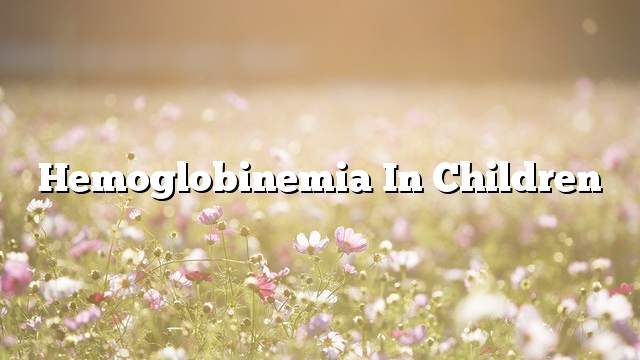Hemoglobin in the blood
The benefit of hemoglobin is to supply the cells and tissues of the body with enough oxygen and food for it to carry out various biological processes to the fullest. Due to the low percentage of iron in the body, which is very common in children, especially in developing countries, due to a variety of causes, including: malnutrition, a vegetarian diet lacking meat, low birth weight, This article will explain the causes, symptoms and treatment of hemoglobin in children.
Causes of hemoglobin in children
- Reliance on cow’s or goat’s milk in which iron is low.
- Children under two years of age should be fed breast milk without introducing iron and solid food into their food.
- Gastrointestinal problems, such as food poisoning, and malabsorption.
- Thalassemia infection.
- Genetic factors, which are broken blood cells.
- Decreased body’s ability to form hemoglobin and red blood cells.
- Cancer.
Symptoms of hemoglobin in children
- Weakness and general debility.
- Dizziness.
- Neurosis.
- Headache and headache.
- Loss of appetite to eat.
- Increase heart rate.
- Paleness of the skin.
- The desire to sleep continuously.
- bite the dust.
- Cracking the corners of the mouth.
- Inflammation of the tongue.
- Pencil nails.
- Infectious diseases such as influenza and tonsillitis.
Diagnosis of hemoglobin in children
- This is done by means of a laboratory examination called a complete blood or blood count, in which the number of red blood cells, hemoglobin and a number of other measures are measured. These include the size of the large and small spherical volume, the average amount of hemoglobin in each red cell, Size of red blood cells.
- There are a number of tests to determine the cause of hemoglobin deficiency in the blood. The most important are vitamins necessary for the formation of hemoglobin, folic acid, vitamin B12, iron-binding proteins such as phenylphenols, ferritin, iron levels and hemoglobin structure. .
Treatment of hemoglobin in children
- It is recommended to eat lean red meat, such as liver, and veal.
- Eat seafood, such as mollusks, salmon, oysters, and shrimp.
- Eat whole grains, including: lentils, beans, brown rice, and oats.
- Citrus fruits are rich in vitamin C, which increases absorption of iron concentrated in other foods such as orange juice, lemon, kiwi and grapefruit.
- Eat green leafy vegetables that contain a high percentage of iron, such as parsley, spinach, coriander, and mallow.
- Eat eggs, where it is recommended to give the child one egg on a daily basis.
